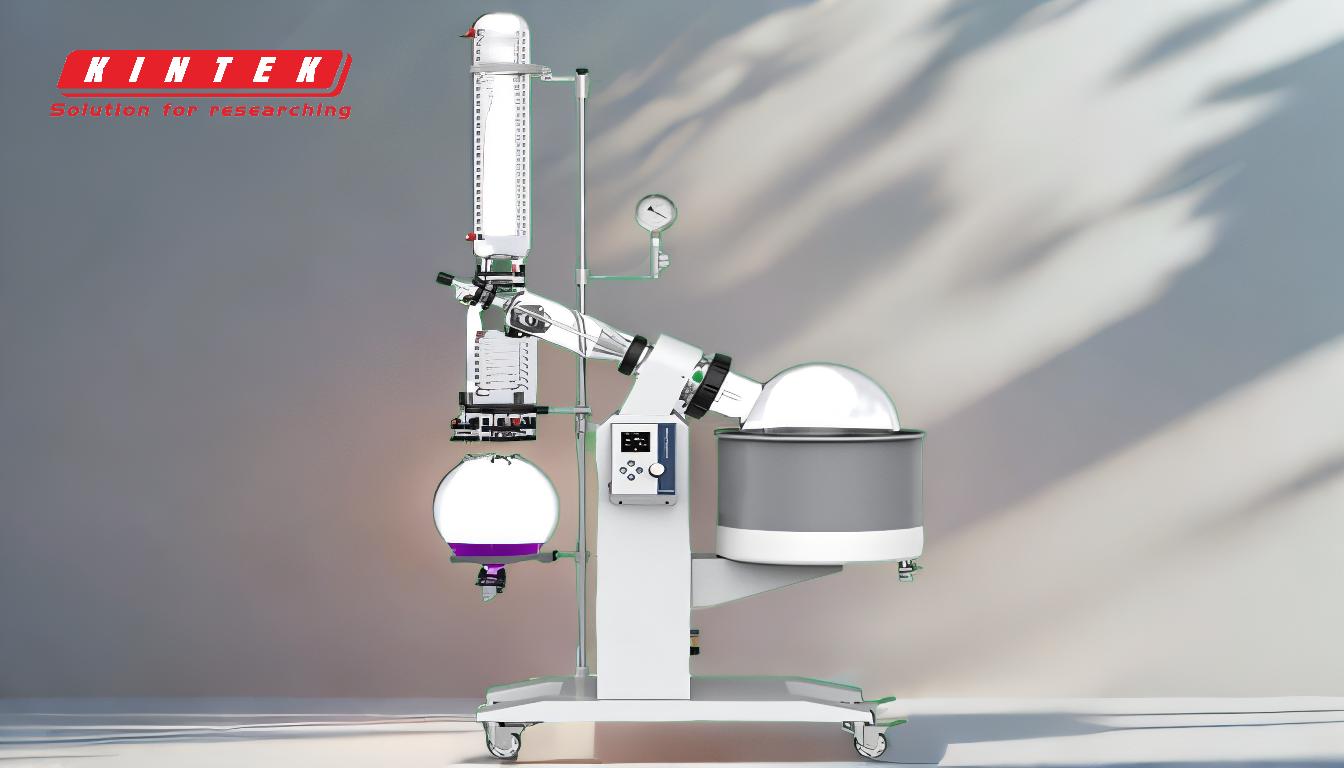A rotary evaporator, or rotovap, is a versatile laboratory instrument primarily used for the efficient and gentle removal of solvents from samples. It operates by reducing pressure to lower the boiling point of solvents, rotating the sample to increase surface area, and applying controlled heat to facilitate evaporation. This makes it ideal for handling heat-sensitive materials and low-boiling-point solvents. Rotovaps are widely used in chemical, pharmaceutical, and biological research for processes such as solvent recovery, concentration, crystallization, and drying. They also find applications in niche fields like molecular gastronomy for creating flavor distillates and in industries like biofuel and alcohol production for purifying and extracting components.
Key Points Explained:

-
Primary Function: Solvent Removal
- The rotary evaporator is most commonly used to remove solvents from mixtures. This is particularly useful in chemical synthesis, where solvents need to be separated from reaction products.
- By reducing the pressure inside the system, the boiling point of the solvent is lowered, allowing it to evaporate at lower temperatures. This is crucial for heat-sensitive compounds that might degrade at higher temperatures.
-
Applications in Research and Industry
- Chemical and Pharmaceutical Research: Rotovaps are essential for concentrating solutions, isolating compounds, and recovering solvents for reuse.
- Biological and Medical Research: They are used for processing heat-sensitive biological samples, such as extracting active compounds from plant materials or purifying proteins.
- Molecular Gastronomy: Chefs and food scientists use rotovaps to create concentrated flavors, distillates, and extracts, enhancing culinary creations.
- Biofuel and Alcohol Industries: In biofuel research, rotovaps help purify biomass components, while in the alcohol industry, they are used for distilling spirits and extracting flavors from herbs and fruits.
-
Advantages of Rotary Evaporation
- Efficiency: Rotovaps can process large volumes of solvents quickly, making them more efficient than traditional evaporation methods.
- Gentle Processing: The ability to operate at reduced pressure and lower temperatures preserves the integrity of heat-sensitive samples.
- Versatility: They can handle a wide range of solvents and are adaptable to various applications, from laboratory research to industrial production.
-
Key Components and Operation
- Vacuum System: Reduces pressure to lower the boiling point of solvents.
- Rotating Flask: Increases the surface area of the sample, promoting faster evaporation.
- Heating Bath: Provides controlled heat to facilitate solvent evaporation without overheating the sample.
- Condenser: Cools and condenses the evaporated solvent, allowing it to be collected separately.
-
Specialized Uses
- Crystallization: Rotovaps are used to concentrate solutions to the point where crystals form, which is useful in purifying compounds.
- Drying and Decontamination: They are employed to remove residual solvents or moisture from samples, preparing them for further analysis or use.
- Separation of Volatile Components: In industries like perfumery or flavoring, rotovaps help isolate volatile compounds from mixtures.
-
Considerations for Purchasers
- Capacity: Choose a model that matches the volume of samples you typically process.
- Compatibility: Ensure the rotovap can handle the types of solvents and materials you work with.
- Ease of Use and Maintenance: Look for features like user-friendly controls and easy-to-clean components.
- Safety Features: Prioritize models with safety mechanisms, such as automatic shut-off and pressure monitoring.
In summary, a rotary evaporator is an indispensable tool in modern laboratories and industries, offering efficient, gentle, and versatile solutions for solvent removal and sample processing. Its applications span across research, production, and even culinary arts, making it a valuable investment for professionals in diverse fields.
Summary Table:
| Key Feature | Description |
|---|---|
| Primary Function | Efficient and gentle solvent removal for heat-sensitive materials. |
| Applications | Chemical, pharmaceutical, biological research, molecular gastronomy, biofuels. |
| Advantages | High efficiency, gentle processing, and versatility across industries. |
| Key Components | Vacuum system, rotating flask, heating bath, condenser. |
| Specialized Uses | Crystallization, drying, separation of volatile components. |
| Purchasing Considerations | Capacity, compatibility, ease of use, safety features. |
Ready to enhance your lab's efficiency with a rotary evaporator? Contact us today for expert advice!










